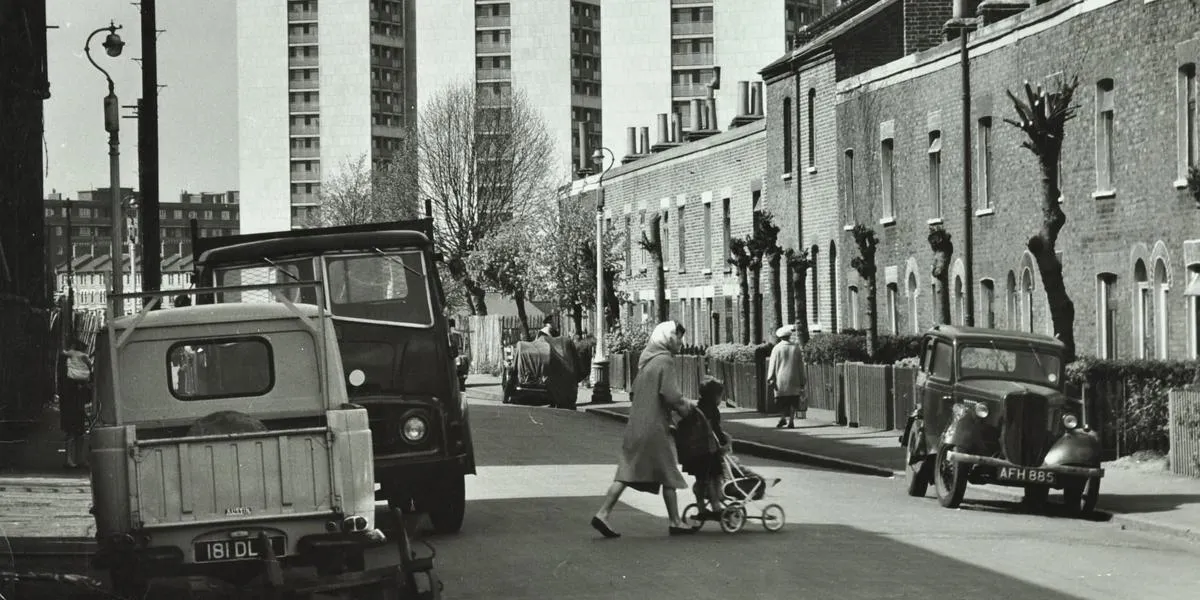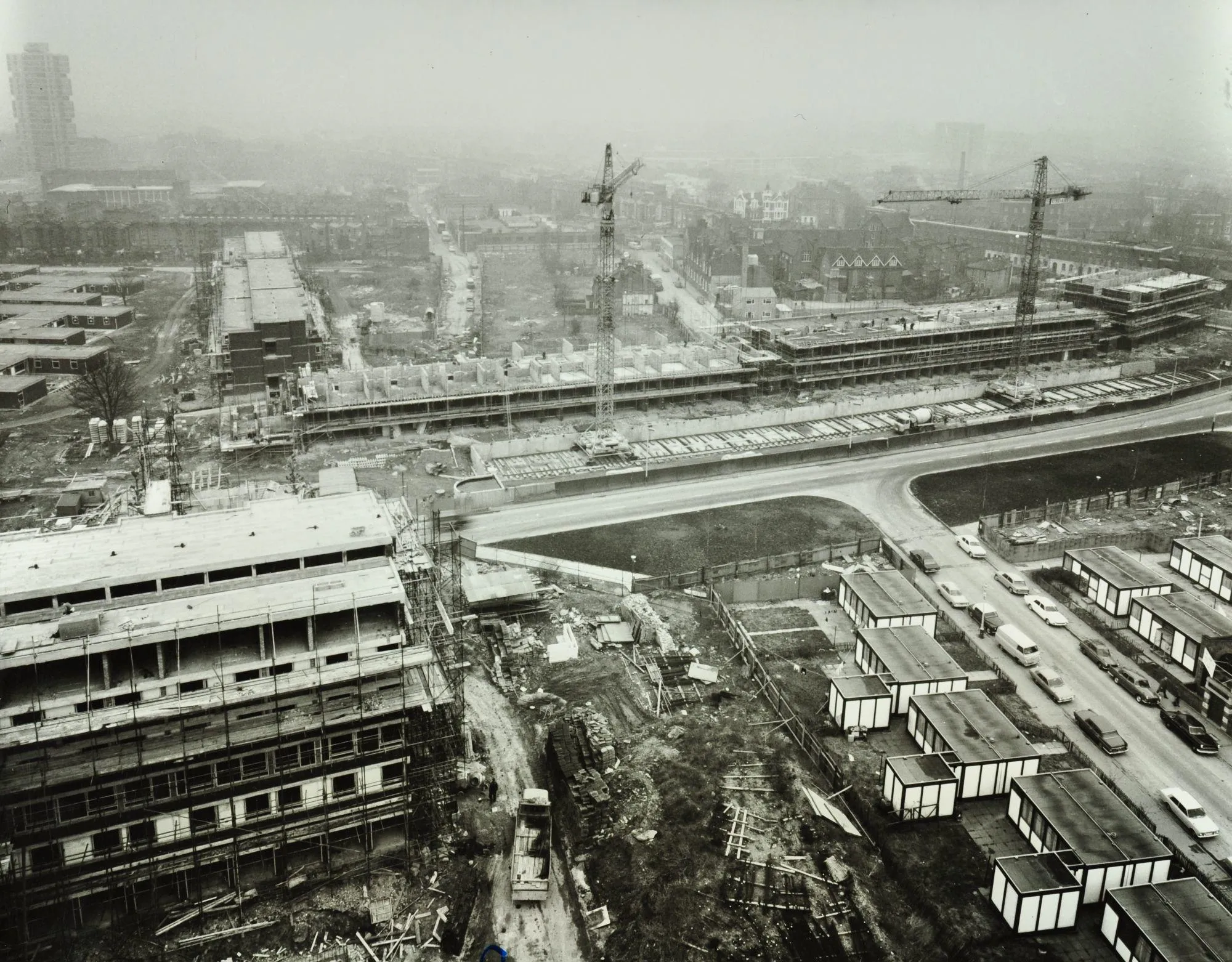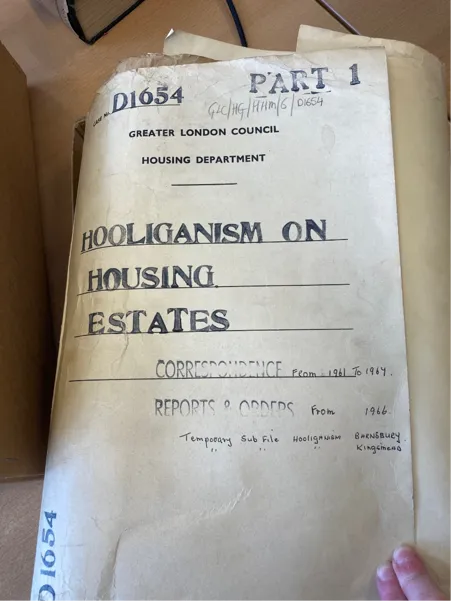'The People of Providence' by Tony Parker

July 2025 - 'The People of Providence' by Tony Parker
In July, the book group examined 'The People of Providence' which was published in 1983. Tony Parker interviewed the residents of 'an ordinary housing estate' in South London over an 18-month period, in doing so creating a unique record of a community at a certain point in time. Parker demonstrates the power of his oral history technique and the richness of everyday lives.
Oral histories
Tony Parker was a writer who used oral histories to explore his subjects, and a common theme of his work was studying people in extreme environments, such as prisons or isolated lighthouses. In the early 1980s he turned his attentions to the residents of a housing estate, Brandon Estate, in Southwark. Brandon Estate was a flagship development when it was completed in the late 1950s, but by the time he compiled 'The People of Providence' its reputation was that of an estate in decline, plagued by crime and hooliganism.

Find more images of the Brandon Estate on the London Picture Archive.
Search the London Picture Archive
Life on the estate
Parker’s method is to build a narrative based on the words of individual residents on the estate. Readers enjoyed the immediacy and the power of these testimonies, their attention to detail and their idiosyncrasy. Many of them are genuinely funny, and some of them are very moving. All human life and experience are represented on this estate, the narratives including people from all ages, genders and from a range of backgrounds.
Through the words of his interviewees, we get a sense of the tragedy of neglect that has happened to the estate. Resident caretakers have gone due to cost cuts and fears for their welfare. Young people dominate the estate, and petty crime frightens many residents. There are contradictions within the community. Long-standing residents remember the estate as it was, a place which was, literally, paradise, newly built and perfect for their needs. Complaints about the estate are tempered by the enjoyment that some residents have in their homes. While some residents see the estate as a haven where they can build a life, others feel trapped.

Social issues of the Thatcher years
Our readers could not fail to take into account the political climate of the time. Parker is reporting during the early years of the Thatcher government, whose controversial “right to buy” policy would completely change the face of social housing provision. The post-war modernist project was failing, in terms of the material fabric of the estate. Parker makes clear links between the personal problems of the estate’s residents and the bigger social issues.
The racism he exposes is shocking. Black residents are routinely othered by white residents, particularly young Black men, who are seen only in threatening terms. We discussed how the Black interviewees insisted that they did not experience racism on the estate and the reason for this disparity – the interviewees were self-selected, and they volunteered to participate in the project. This meant that we could only ever get a partial view of the experience of the estate’s residents.
Curation
Parkers curation and heavy editing was raised as one of the book’s flaws, and something readers have to be mindful of. He didn’t keep his tapes of the interviews, or his transcripts so we can never know how much of an intervention he made. Readers were also concerned that the project by its very nature was voyeuristic.
Despite these concerns, the group found this a thought-provoking and fascinating read, and a valuable exploration of the lives of Londoners in the early 1980s.
Archive sources
The group looked at a report, LCC/CL/HSG/01/094. Between 1951 and 1957 the London County Council employed a sociologist, Margaret Willis, to look into numerous issues around housing. This 1955 report into the experience of tenants living in high rise blocks is almost certainly formed from her research. Tenants’ experiences vary, but many stress that the nature of their neighbours is more important than the height they live at. Some people do express anxiety about safety, especially in relation to balconies. Originally, families with young children were not meant to be housed in high rises at all.
Why not try searching our catalogue to research housing and other estates like the Brandon Estate.
Search the catalogueFurther reading
Recommendations made during the session included:
- Lynsey Hanley’s Estates – An Intimate History and John Boughton’s Municipal Dreams: The Rise and Fall of Council Housing.
- Boughton’s Municipal Dreams blog includes two entries on the Brandon Estate.